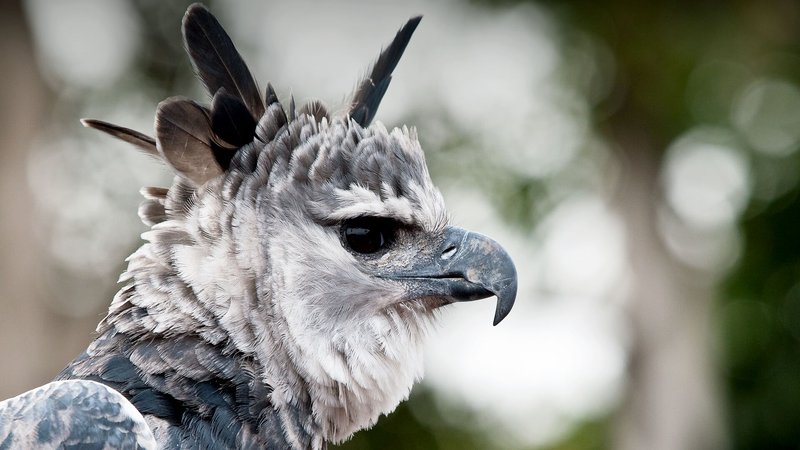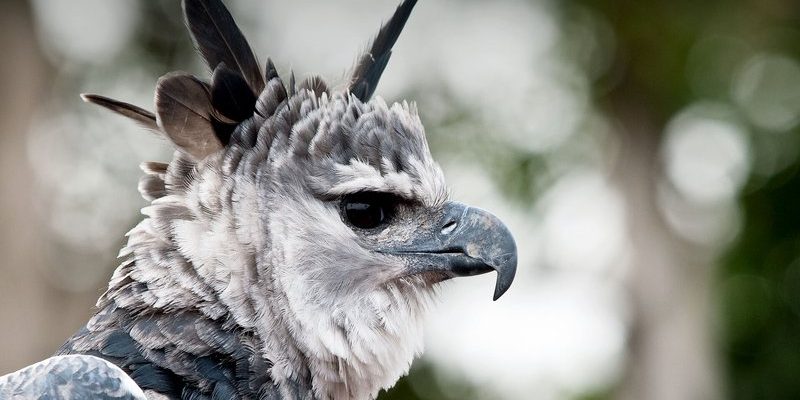
Harpy eagles are specially equipped to thrive in their habitats, tackling challenges that would be tough for many other animals. Like a well-fitted glove, their features and behaviors allow them to navigate the dense forest canopy, hunt efficiently, and raise their young. So, how do these birds pull off such impressive feats? Let’s dive into the fascinating world of the harpy eagle and explore how it adapts to its environment.
Physical Adaptations: Built for the Jungle
To start, one of the most striking features of the harpy eagle is its size. Adult harpy eagles can weigh up to 20 pounds and boast a wingspan of nearly seven feet. That’s pretty massive for an eagle! This size gives them the strength to hunt large prey like monkeys and sloths. Imagine being a bird that can take down something as hefty as a small dog! Their impressive size isn’t just for show; it helps them dominate their food chain.
But it’s not just about being big. The harpy eagle also has incredibly powerful talons that can be over three inches long. These are like the eagle’s built-in tools for grasping and killing prey. When you see those talons up close, it’s easy to understand why they’re often compared to a bear’s claws. They allow the harpy eagle to hold onto its prey tightly, making sure it doesn’t slip away during the hunt.
Another key physical adaptation is their feathers. Harpy eagles have a unique color pattern—dark gray and white—that camouflages them in the dappled light of the forest. This means that while they’re perched high above on tree branches, they can blend into their surroundings. If you were a small animal wandering the forest floor, you’d never see them coming!
Behavioral Adaptations: Smarter than the Average Bird
While physical traits are essential, the harpy eagle’s behaviors also play a huge role in its survival. For instance, they are solitary hunters, meaning they prefer to hunt alone rather than in packs. This allows them to be stealthy and focus on their specific hunting grounds without distraction. Think of it like a skilled archer honing in on a target—every move is precise and calculated.
Harpy eagles are also known for their incredible eyesight. They can spot prey from high above, in thick foliage, or even among treetops. This keen vision helps them plan their dives for maximum impact. When you see one swooping down at lightning speed, it’s not just luck; it’s a perfectly executed hunting strategy.
Moreover, these eagles are known for their patience. They often sit for long periods quietly observing their surroundings. This waiting game is a smart tactic, as it helps them catch prey off guard. It’s like fishing; sometimes, you have to wait for the right moment for the catch of the day.
Habitat Choices: Finding the Perfect Home
Location is everything for the harpy eagle. They thrive in dense tropical rainforests, where they can find ample food and nesting sites. The lush canopy protects them from strong winds and predators, while the multitude of branches provides ideal spots for hunting and resting. It’s like a cozy home equipped with everything they need.
These eagles build massive nests high up in trees, often reusing the same nest year after year. It’s like a home that gets bigger and better over time! They add more sticks and twigs each season to make it sturdier. These nests are also a safe haven for their young chicks, ensuring they grow up protected from dangers below.
Interestingly, harpy eagles are quite selective about their territory. They need a vast area to hunt effectively, usually spanning several square miles. It’s like claiming their own little kingdom in the forest. This doesn’t just ensure plenty of food; it also reduces competition from other birds.
Dietary Flexibility: Eating What’s Around
When it comes to food, harpy eagles are opportunistic eaters. While they love munching on monkeys and sloths, their diet can vary based on what’s available in their environment. They’re not picky eaters; if something’s easy to catch, they’ll go for it. This flexibility is a vital adaptation that helps them survive in changing conditions.
For example, if monkey populations dwindle in a specific area due to habitat changes, harpy eagles may shift their diet to include birds or other small mammals. It’s like having a backup plan when the main course isn’t on the menu. By being adaptable in their eating habits, they can make the most of whatever their environment offers.
This adaptability also extends to their hunting techniques. Different prey requires different methods; for instance, catching a sloth may involve waiting patiently while the animal climbs down to a lower branch. This savvy hunting approach showcases how the harpy eagle uses its environment to its advantage.
Reproductive Strategies: Raising Young in the Wild
When it comes to raising their young, harpy eagles are dedicated parents. They usually mate for life and take turns caring for their chicks. This teamwork ensures that one parent is always on the lookout for threats while the other feeds and nurtures the younglings. Imagine juggling a job and home life—it’s about balance!
The female typically lays one to two eggs, and both parents share the responsibility of keeping the nest safe and warm. Once the chicks hatch, they rely on their parents for food and protection for a few months. You might wonder how these little birds learn to fly and hunt. They watch their parents closely and practice their flying skills until they’re ready to venture out on their own. It’s like an apprenticeship program in the wild!
Also, the timing of their breeding season aligns with the best food availability, ensuring that the young have enough to eat while growing. This thoughtful timing is another way harpy eagles adapt to their environment, ensuring their chicks have a fighting chance.
Environmental Threats: Challenges They Face
Despite their impressive adaptations, harpy eagles face significant challenges due to habitat loss and human activity. Deforestation, primarily for agriculture or logging, threatens the dense forests they depend on. When their homes are cut down, hunting becomes more difficult, and finding suitable nesting sites becomes a challenge.
In addition to habitat loss, hunting poses a risk to harpy eagles. While they are not typically hunted themselves, their prey often is, leading to declines in food sources. It’s a tough cycle: fewer monkeys and sloths mean less food for these powerful birds.
Conservation efforts are crucial to ensure that harpy eagles continue to thrive. Protecting their habitats and educating communities about the importance of these magnificent birds can help counteract some of the threats they face. It’s like planting seeds for a brighter future for generations of harpy eagles to come.
The Importance of Harpy Eagles in Their Ecosystem
Finally, let’s talk about why harpy eagles matter in their environment. As apex predators, they play a critical role in maintaining the balance of their ecosystem. By keeping the populations of their prey in check, they help sustain the overall health of the forest.
When you think about birds of prey, you might think they’re just hunting machines. However, their presence contributes to biodiversity. This creates a richer habitat for other species, making the forest a healthier environment. It’s like a domino effect—protecting one species can ultimately benefit many others.
In summary, harpy eagles aren’t just stunning birds; they are integral parts of their ecosystems. Their adaptations, from physical traits to behaviors, showcase their incredible ability to survive and thrive in challenging environments. When we understand and appreciate these magnificent creatures, we take steps toward ensuring their survival for the future.
By recognizing the importance of harpy eagles and supporting conservation efforts, we can help maintain the beauty and balance of the ecosystems they inhabit. Let’s celebrate these incredible birds and the vital roles they play in our natural world!

